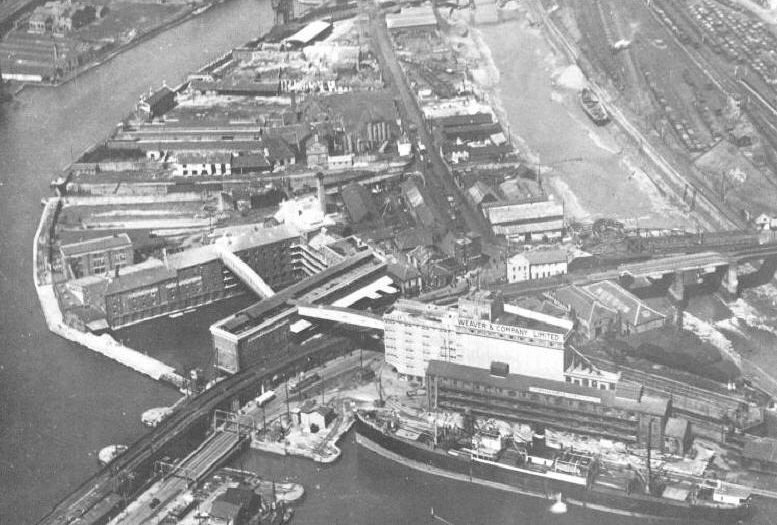All a bit quiet on the waterfont
South Wales Evening Post - Tuesday 20 August 2013
HERITAGE seems to be very much on the agenda of late. That’s fine by me. I just wish that we could sometimes give more thought as to how the past has helped shape the present day.
For myself, I’ve always been fascinated by Swansea’s transition from an industrial town to modern city. You only have to look at the old photograph below to see that this was a very different place 80 years ago.
Something else you might notice is that there used to be a lot more waterfront than we have today. Shipping was an industry in itself and not just the seagoing kind. Victorian ingenuity created ways for busy river traffic to move goods and materials up and down the Tawe and into a network of basins and canals.

Victorians showed a lot more ingenuity when it came to waterfront development
As industry declined and the ugly infrastructure rusted, post-war planners thought the best thing was to finish the job started by the Luftwaffe and bury the derelict reminders of the past.The old North Dock, which is on the left of the photo, is where Parc Tawe and the Strand are today. The South Dock was also filled in although a new generation of planners later went on to persuade civic fathers that it could be put to better use as a marina.
Docklands regeneration was all the rage thanks to the property boom and it wasn’t long before land experts were also looking at the semi-abandoned Prince of Wales dock as a redevelopment opportunity.
Andrew Davies, former Assembly economic development minister and Swansea AM, was a driving force behind what we now call SA1 Waterfront. I recently asked him if he thought that buying 1000 acres from the port owners and pumping in some £200 million worth of investment had paid off.
I was intrigued that he thought the key still remained one of getting the right balance between commercial and residential needs. I think I know what he means. My experience of living for a spell in the Maritime Quarter is that as much as urbanists like to talk about ‘vibrancy’ you can still walk around places like the marina basin at night to the echo of your own footsteps.
Where Swansea seems to have got it right however is its seafront. Admittedly it occasionally feels that we’ve exchanged railway lines and sidings for six lanes of traffic as a barrier between the city and the sea. Even so, solid planning decisions and focused investment have clearly made a difference to the foreshore.
What I’d like to see is the same effort going into making the river Tawe corridor an equally important part of city’s waterfront. Millions were spent on a barrage in the late 1980’s to make the river navigable only for the economic potential for upstream development to go ignored for the next couple of decades.
I could be wrong but I read the current strategy as a plan for more housing, a bridge and a new Morfa distributor road. The fact that a river runs through it seems to be incidental.
Swansea Community Boat, which is now in its second full season, runs two or three trips a day from the Marina to the Liberty Stadium and back. Hopes are high that a mooring at Hafod can be included in the Copperopolis project so that journeys can also start or end at this point. Wouldn’t that be an investment?
Furthermore, a river taxi would complement the proposed shuttle boat service connecting Mumbles with other landing points in Swansea Bay - something which is currently under consideration. More on this in a few weeks.
So it seems that apart from re-excavating and flooding Parc Tawe (don’t tempt me) the potential for creating new waterfront opportunities are pretty slim. Or are they?
In my opinion, the proposed tidal lagoon in Swansea Bay is a project worthy in its ambition of our Victorian forebears. It is a massively important scheme. Yes, there are questions that need to be answered but the people behind the project seem confident that they can clear the technological and environmental hurdles. More power to their elbow.
You only need to visit the Merchant Navy memorial at SA1 to get a sense of Swansea’s maritime heritage. In the same way, the timelines and exhibits at the National Waterfront museum remind us of our past role. It might be a good idea to spend some time thinking about how our relationship with the sea can help shape where we want to be in years to come.